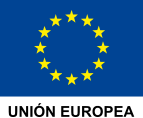Dentius_Biofilm is a toolbox for computation of bacterial viability for in situ oral biofilm
Author: Maria J. Carreira (CiTIUS, USC)
Collaborators: Inmaculada Tomás, Carlos Balsa-Castro, (Oral Sciences Research Group, USC), Nicolás Vila-Blanco
Reference paper with use of the toolbox: Quintas V, Prada-López I, Carreira MJ, Suárez-Quintanilla D, Balsa-Castro C and Tomás I: *In Situ Antibacterial Activity of Essential Oils with and without Alcohol on Oral Biofilm: A Randomized Clinical Trial. Front. Microbiol. 8:2162. doi: 10.3 Frontiers in Microbiology, vol. November 2017, no. 23. 2017*
Different objectives have been performed applying this toolbox. Firstly, to compare the bacterial viability of the in situ oral biofilm with different types of antiseptics (Clorhexidine, Essential oils with alcohol and alcohol-free Essential oils). Secondly, to compare the bacterial viability of an artificial substrate-formed in situ biofilm with a supragingivally tooth-formed biofilm in the same individuals, as well as the impact that the intraoral device/disk position and toothbrushing had during the biofilm’s formation.
The volunteers carry on an IDODS (Intraoral Device of Overlaid Disk-holding Splints) split model with several disks and fields to measure the viability of bacterias on accumulated biofilm in situ.
Images are acquired through a confocal microscopy, after staining the biofilm samples with the LIVE/DEAD® BacLight™ solution.
For each patient with IDODS (Intraoral Device of Overlaid Disk-holding Splints): * number of disks (different places of IDODS around the dental arcade) * number of fields 1 micrometer thickness * number of layers in z-axis from confocal microscopy
Dentius_Biofilm automatically computes the bacterial viability for each patient for each experiment although each patient have different number of disks/fields/layers. It works with the information of folder hierarchy.
Dentius_Biofilm automatically eliminates from the computation the non vital pixels belonging to epithelial cell nuclei
Dentius_Biofilm stores all the viability results (with and without considering epithelial cell nuclei) in a spreadsheet called EE_results.xlsx. It also stores number and properties of endothelial cell nuclei.
Usage
The images are classified within a set, then within an experiment and then within a patient, each hierarchically in their own folder, so images for the patient VC for experiment E1 and set Set1 will be inside the folder Set1/E1/VC. The format of images is the following, being PPthe patient initials, EE the experiment, d the disk number, c the field number and XXX the layer number:
* Green image, named `PP_EE_Dd_Cc_zXXX_green.tif`
* Red image, named `PP_EE_Dd_Cc_zXXX_red.tif`
There is an example included in the repository, with all the folder hierarchy in file Set1.zip:
Set1/E1/VC/VC_E1_DdCc_zXXX_green.tif
Set1/E1/VC/VC_E1_DdCc_zXXX_red.tif
Set1/E1/VQ/VQ_E1_DdCc_zXXX_green.tif
Set1/E1/VQ/VQ_E1_DdCc_zXXX_red.tif
With the included images you can run the following example:
- Image folder:
Set1 - Experiment folder:
E1 - Patient folder:
VC - Patient folder
VQ
Info
-
- Researchers
- María José Carreira Nouche



